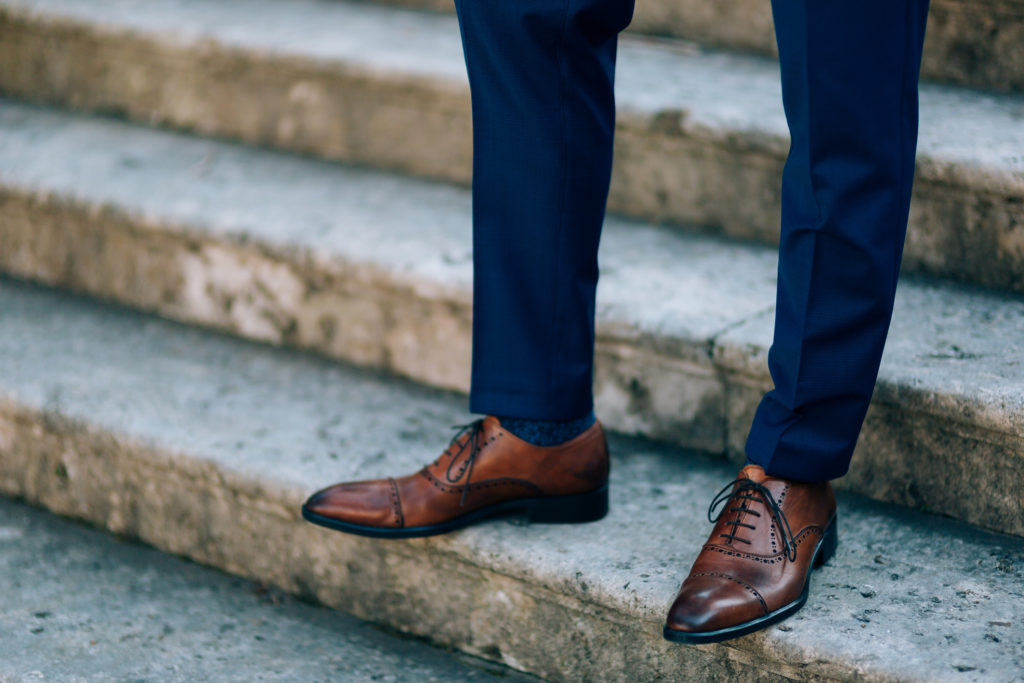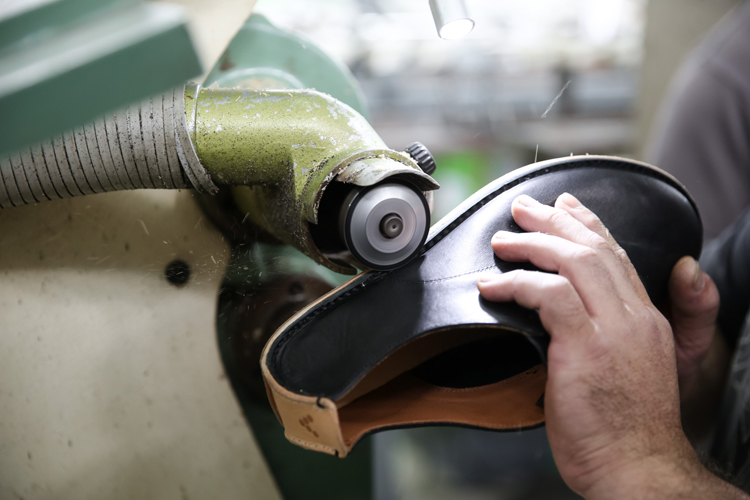As runners, we’re obsessed with the finer points of running footwear: how much does it weigh? Is it neutral or supportive? Will it look good on my Instagram account?
But how much attention do we pay to our day shoes? My guess is, not a lot. And yet it’s these shoes, rather than our prized trainers, that we’ll spend the majority of our waking hours wearing. There’s something inconsistent about that, isn’t there?
Not only is it inconsistent, it could be detrimental to our feet and, by extension, our running.
“If you constrain the foot for seven hours a day by wearing a narrow, tapered shoe with a heel, you’ll get an unfavourable adaptation in its structure,” says Dr Mick Wilkinson, a senior lecturer in sport, exercise and rehabilitation at Northumbria University. “It’s Wolff’s Law: bones conform to the pressures put on them.”
In other words, if you wear shoe-shaped shoes, you’ll end up with shoe-shaped feet. This can happen very quickly, too, particularly in children, whose feet are incredibly malleable. Evidence suggests structural change to the feet can happen in as little as six weeks.
Feet of endurance
If you want to know what a healthy, functional foot looks like, you have to look at someone who’s never worn shoes.
“A native/natural foot is extremely wide,” says Dr Wilkinson. “The big toe is in an ‘abducted’ position, flaring out away from the other toes, giving the foot its maximum width right at the front. Haile Gebrselassie had a childhood without shoes and had feet so wide that he struggled to fit into conventional trainers when the sponsors came circling. However, with all the feedback inherent in going barefoot, he had already acquired the skill of running as a youngster, so his technique, possibly to a large extent, compensates for the fact that his feet are now actually quite structurally compromised.”
Running or walking around barefoot isn’t an option for most of us, of course, so what’s the alternative?
“I would encourage people to walk around in a zero-drop shoe, with a roomy toe-box and no toe spring,” says Mark Esteban of Vivobarefoot. The problem with a lot of traditional shoes is that they defy the anatomical laws of the foot. The result is that most people’s become dysfunctional.”
One of the major problems with traditional shoes is that they move the big toe inward and upward from its natural position, something that impairs balance and can lead to a bunion. “The bunion comes as a result of a misplaced and therefore dysfunctional big toe that is unable to control and stop the natural-inward roll of body weight through the foot,” says Dr Wilkinson. “Over time, the uncontrolled-excessive inward roll loads the inside edge of the ball of your foot, and the body responds by adding more bone to deal with that load, resulting in a bunion. Barefoot shoes can’t help at this point – in fact, they’ll make the problem worse as the foot is mechanically compromised and inherently unstable. Instead, you’ll need surgery to restore correct toe alignment and therefore structural stability”.
You wouldn’t have to be Karl Lagerfeld to note that a lot of barefoot-style shoes are somewhat lacking in the fashion stakes. Brave is he who turns up the workplace rocking the suit-and-Vibrams ensemble. Going full barefoot is another shortcut to being handed your P45, while a lot of minimalist shoes have the unwelcome habit of making the wearer’s feet look like a kidney bean.
Help is at hand, however, in the form of companies like Xero Shoes and Vivobarefoot, who are now creating shoes that are easy on the feet and easy on the eye.
“In the past, a lot of designs have looked orthopaedic or clownish,” says Steven Sashen, CEO of Xero Shoes. “We’re trying to create something with a bit more style. At the company’s core, though is the same insistence that all shoes be “flat, flexible in all directions and lightweight.”
Many minimalist day shoes have a maximalist price tag (all of Vivobarefoot’s lifestyle shoes are north of the £100 mark). And that’s something barefoot manufacturers may need to address if they’re to appeal to the mass market. But think of it this way: if inflexible and unstable feet are the root cause of your running injuries – and for many people they are – long-term it’s going to be more cost-effective to invest in a pair of well-designed day shoes than it is to continually visit the physio.
Consider this statistic: in a healthy foot, 17% of the initial load when running is stored in the elastic arch of the foot and 35% in the achilles – together that’s dealing with over 50% of the overall load.
“If your arch isn’t able to stretch and recoil, the 17% of the load that it should be dealing with goes to the next elastic structure, which is the achilles,” says Dr Wilkinson. “The result, almost inevitably, is injury. The problems from dysfunctional-unstable feet travel ‘upstream’, manifesting as problems in the lower leg, knees, hips and even lower back”.
Walk don’t run
For too many people, their journey in (and out) of minimalist running has been a variation on the following tragicomedy: read Born to Run; believe built-up shoes are the root of all evil; buy a pair of Vibrams; attempt to run big miles like the Tarahumara; get injured; write off minimalist running as gobbledygook; buy a pair of Hokas.
There’s another way, of course, but it requires two words that most runners hate: patience and time. You have to walk before you can run – literally. At Vivobarefoot, they encourage all customers who are looking to transition into barefoot running to begin by walking around in a barefoot shoe for a number of weeks. It’s a bit like in Karate Kid when Daniel-San wants to learn to bust heads and Mr Miyagi has him paint his fence. Daniel-San is askance; but Miyagi, as ever, is right.
“I’d encourage people to spend several months, maybe even a year, simply walking in barefoot shoes before they try to run in them,” says Esteban. “And you know what? A sizeable minority of people will never be able to run in barefoot shoes. We’re open and honest about that. But what’s wrong with having a stronger, more stable and pliable foot in the meantime?
“I’d far rather someone walked around in a pair of barefoot shoes eight hours a day and wore Nike Pegasus for their one-hour run, than tried to jump into running in barefoot shoes and get injured.”
So, isn’t it about time you stopped fretting about your running shoes and paid more attention your lifestyle shoes? Your feet just might thank you for it.








